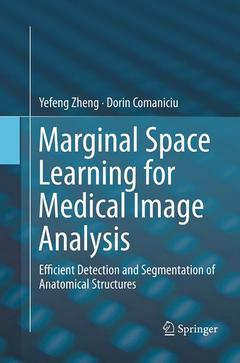Description
Marginal Space Learning for Medical Image Analysis, 2014
Efficient Detection and Segmentation of Anatomical Structures
Authors: Zheng Yefeng, Comaniciu Dorin
Language: English
Subject for Marginal Space Learning for Medical Image Analysis:
Keywords
3D medical image data; Anatomical structure detection; artificial intelligence; computed tomography; human body parsing; human organ pose estimation; intelligent image analysis system; machine learning; magnetic resonance imaging; marginal space learning; medical image analysis; medical image segmentation; medical imaging; object detection; organ segmentation; ultrasound
52.74 €
Subject to availability at the publisher.
Add to cartSupport: Print on demand
52.74 €
Subject to availability at the publisher.
Add to cart268 p. · 15.5x23.5 cm · Hardback
Description
/li>Contents
/li>Comment
/li>
Automatic detection and segmentation of anatomical structures in medical images are prerequisites to subsequent image measurements and disease quantification, and therefore have multiple clinical applications. This book presents an efficient object detection and segmentation framework, called Marginal Space Learning, which runs at a sub-second speed on a current desktop computer, faster than the state-of-the-art. Trained with a sufficient number of data sets, Marginal Space Learning is also robust under imaging artifacts, noise and anatomical variations. The book showcases 35 clinical applications of Marginal Space Learning and its extensions to detecting and segmenting various anatomical structures, such as the heart, liver, lymph nodes and prostate in major medical imaging modalities (CT, MRI, X-Ray and Ultrasound), demonstrating its efficiency and robustness.
These books may interest you

Biomedical Imaging 210.99 €



